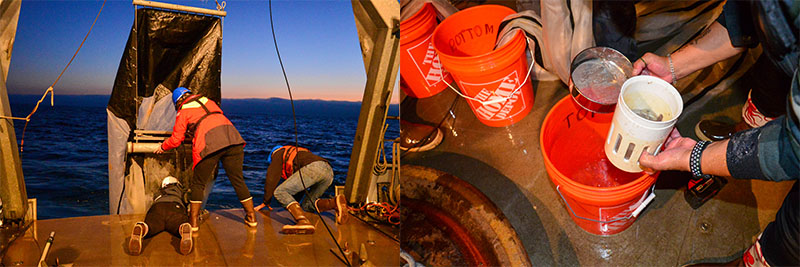

(Left) Each night, zooplankton perform the greatest migration on Earth as they travel higher in the water column to feed on even smaller phytoplankton. To collect samples of these organisms, researchers wait until dark to deploy zooplankton nets that are towed behind the boat. (Right) The Coordinated Simultaneous Physical-Biological Sampling Using ADCP-Equipped Ocean Gliders expedition team collects zooplankton specimens from nets that were towed at a depth of 120 meters (394 feet). These zooplankton samples will be analyzed under the microscope for species identification and length measurements and serve as ground truth for the acoustic data.